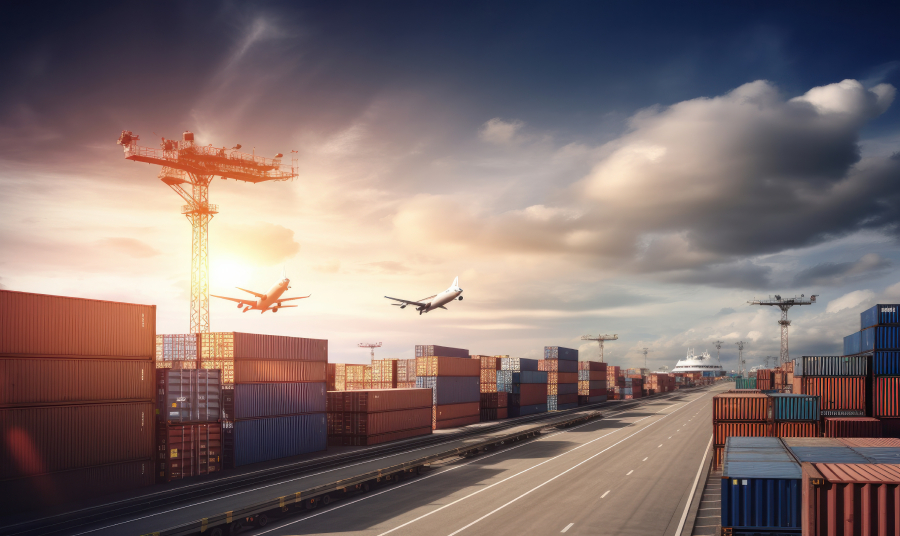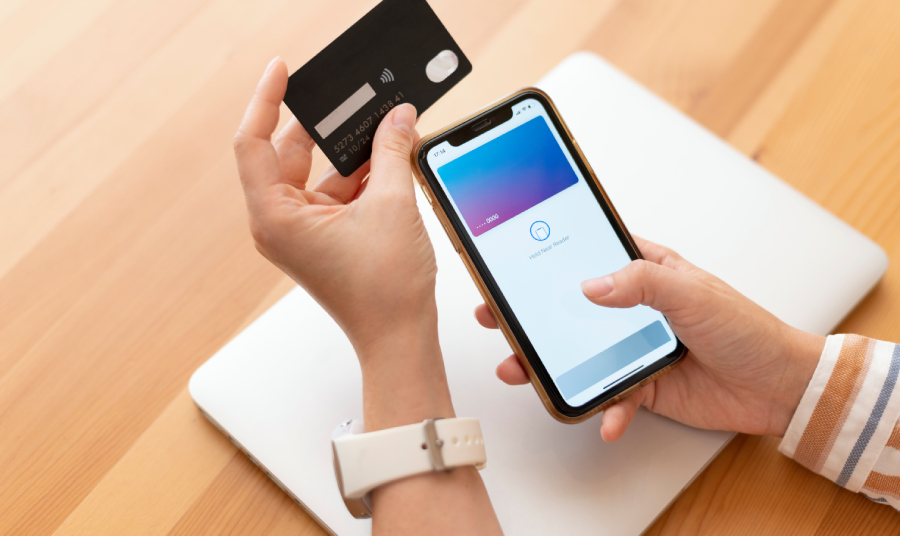How To Sell Online in Australia and New Zealand
Amazon isn’t the dominant force in Australian and New Zealand online shopping. So, which marketplaces do regional consumers prefer, and how can international sellers break into the Australasian market?

Australia and New Zealand both have established economies; interestingly, however, Amazon doesn’t dominate e-commerce in either country. Instead, Australian and New Zealand online shopping happens via a collection of different marketplaces — particularly eBay.
In this guide, we’ll explore the differences between e-commerce in Australia and New Zealand versus other western markets. Then, we’ll examine a few of the best regional marketplaces for international sellers. We’ll also look at rules, regulations and licensing requirements for US companies looking to import products into Australia and New Zealand.
- Amazon in Australasia
- Best Australian and New Zealand online shopping marketplaces
- How to sell online in Australia and New Zealand
- Importing products into Australasia
Amazon in Australasia
Many marketplace sellers in the US operate mainly via Amazon, which launched in 1994. Perhaps surprisingly, Amazon is a relative newcomer in Australasia: Amazon didn’t even offer web services in Australia until 2012, and didn’t launch a retail offering in the country until 2017. Now, the company has distribution centers in Melbourne, Sydney, Perth and Brisbane.
Amazon’s presence in New Zealand is still limited. In 2018, Amazon launched its ‘International Shopping’ service for customers on islands in New Zealand; from then onward, Kiwis were able to order products for delivery from the USA. Unfortunately, that meant they had to pay both shipping and import duty fees. In 2021, Amazon Australia began sending products to consumers in New Zealand, which reduced shipping costs.
In the future, Amazon might build a distribution center and fully expand into New Zealand. For now, Amazon remains a secondary player in Australia and is a minor part of the New Zealand e-commerce market. With that in mind, marketplace sellers often create eBay accounts when they expand into the Australasian market, or set up standalone e-commerce sites instead.
Best Australian and New Zealand online shopping marketplaces
With a collective population of nearly 33 million people — roughly 28 million in Australia and about 5 million in New Zealand — Australasia has a marketplace almost equal to that found in Canada. From an economic perspective, the territories are very similar: in 2020, Canada had a GDP of nearly $1.5T, while New Zealand and Australia combined had a GDP of $1.4T.
Clearly there are valid economic reasons to break into Australasia. Several marketplace options exist for US-based SMEs looking to expand into the region, including eBay, Trade Me and Amazon Australia.
eBay
eBay is one of the biggest fish in the Australasian e-commerce ocean. According to Statista, consumers in Australia and New Zealand visit eBay more than 61.7 million times a month. That figure puts eBay firmly in first place on the Australasian online shopping leaderboard.
If you’re a marketplace seller in the US and you want to expand into Australia and New Zealand, you can use your US eBay profile to log into eBay Australia. After that, you can create listings tailored to the Australasian marketplace. When you sell items via eBay Australia, you’ll only pay fees that apply to the Australian version of eBay.
If you run a store on eBay Australia, you can buy an eBay store package. Store packages run from $24.95 a month to $549.95 (AUD) per month, and they include between 600 and 250,000 free listings per month.
Catch.com.au
Another option for international sellers is Australia’s Catch marketplace, which is part of the Wesfarmers Group. More than 3 million Australians have active Catch profiles, making the site a popular destination for consumers in the country. US-based marketplace sellers can create accounts on Catch, and can then sell products on a retail or wholesale basis.
So, what should you sell on Catch? According to a recent global consumer survey, Australians shop for clothing online more than any other product category. Shoes came in second, and bags and accessories came third on the list. Other viable dropshipping options include consumer electronics, cosmetics, and drugstore and health products.
Trade Me
Founded in 1999, Trade Me is New Zealand’s largest online marketplace. It went public in December 2011, and began allowing international sellers access in 2013. Now, Trade Me has just over 5 million members and roughly 8 million active listings at any one time. As an auction-driven marketplace like eBay, Trade Me currently holds the number four traffic ranking for the whole of New Zealand.
It isn’t hard to get started on Trade Me. If you make more than a certain threshold in online sales every year and you’re prepared to ship products from the US to New Zealand, you’ll likely be accepted as a seller. Fees for brand stores begin at NZ$79, and you’ll gain access to Trade Me’s comprehensive content management system when you sign up.
New Zealand is a compact market, but consumers in the country are enthusiastic about — and have money to spend on — overseas merchandise. According to research by J.P. Morgan, almost a quarter of consumers in New Zealand regularly use buy now pay later (BNPL) options at checkout, so if you sell high-value items on Trade Me, it’s worth including Afterpay in your payment options.
Amazon Australia
While Amazon isn’t the biggest player on the Australasian e-commerce scene, it’s not small, either. Amazon’s Australian and American sites receive a combined 34.6 million Australian and Kiwi visitors every month, making the platform an essential site for international marketplace sellers.
If you have an existing Amazon Seller Central account, you can use it to sell products on any of Amazon’s North American, European and Asian accounts. To get started, register your Seller Central account with an Amazon Marketplace, and then set up your global selling account. Finally, use the Build International Listings tool to create product listings for Amazon Australia.
As an Amazon Australia marketplace seller, you have three main fulfillment options: independent shipping, Fulfillment by Amazon (FBA) or fulfillment by a third party in Australasia. In the first instance, you send customers orders to Australia and New Zealand from the US; in the second and third, you import products into Australia and subcontract with Amazon or a third party delivery service.
How to sell online in Australia and New Zealand
Australia’s e-commerce market is rapidly growing. By 2027, e-commerce revenue is projected to reach $64.18bn. The pandemic saw the biggest boom in online shopping – according to a survey by Statista, 15% of respondents said they started shopping online due to COVID-19.
Consumers in New Zealand, meanwhile, are generally enthusiastic about online shopping — and they don’t mind buying goods from overseas retailers. In January 2021, a full 88.4% of people in New Zealand searched for products or services online; 70.9% of those consumers ended up buying from e-commerce stores.
If you decide to expand into Australia and New Zealand, you can use this eight-step process to get off on the right foot:
- Write a business expansion plan: Define your unique selling proposition, think about how you’ll fulfill orders, consider your financing needs and create a logistics strategy.
- Perform market research: Research your target consumers in Australasia to figure out what they buy, how much they’re willing to pay for products or services, and how quickly they expect to receive goods.
- Segment your markets: If you plan to break into Australia and New Zealand at the same time, break your expansion strategy into two distinct pieces. Consider barriers to entry in each marketplace, and divide consumers into marketing categories.
- Perform a competitive analysis: Do other companies in the region — or other international sellers — offer products similar to yours? If so, how can you gain an edge in the marketplace?
- Refine your logistics strategy: Will you ship orders internationally, or will you work with third-party fulfillment providers in Australia and New Zealand? How much will you need to spend on shipping and fulfillment, and how long will customers need to wait to receive products?
- Draft a financial strategy: Similarly, focus on your financial strategy to ensure you have the budget to expand. Consider e-commerce platform fees, equipment costs, product acquisition costs, warehousing and shipping costs, third-party fees, customs and duty fees and other expenses.
- Set up your online presence: At this point, set up your online presence — your website, or your seller account on Amazon, Trade Me, or eBay. Ensure the product descriptions you write are tailored to Australasian readers.
- Launch your expansion: Go live in your target market, track conversions and repeat orders, and tweak your strategy based on key performance indicators. Keep an eye on regional trends, and craft seasonal promotions well in advance.
Importing products into Australasia
We mentioned third-party and Amazon fulfillment options a little earlier; now, we’ll dive deeper into Australasian import and export rules. Different rules and regulations — and different sales taxes — exist in Australia and New Zealand.
If your import and export obligations are substantial, or if you don’t have the time to spend on import and export paperwork, you can work with a customs broker or a freight forwarder. Hiring an import and export professional costs money, but doing so can save you time and streamline your expansion strategy.
Importing from the US
Ever since the implementation of the US-Australia Free Trade Agreement in 2005, the US has maintained a solid trade relationship with Australia. In 2021, US exports into Australia amounted to $26.4 billion, a 13% increase from the year before.
You’ll need to pay 10% Goods and Services Tax (GST) on the sale of most products and services in Australia. You’ll also need to provide the Australian Border Force with import declarations and pay relevant duties, including excise duties on alcohol, fuel and tobacco products. Your products might also have to meet Australia-specific packaging and quality standards.
In New Zealand, you’ll have to pay 15% GST on the sale of products and services. You’ll need to provide the New Zealand Customs Service with import declarations, and you’ll be liable for customs duties and other fees. You can use the Working Tariff Document of New Zealand (WTD) to work out which fees you need to pay.
Two specific laws govern product quality and safety in New Zealand: the Consumer Guarantees Act, and the Fair Trading Act. SMEs looking to expand into the country can use the Standards New Zealand site to make sure they comply with regulations.
Importing from Australia into New Zealand
If you plan to export Australian-made goods into New Zealand, or vice versa, slightly different rules apply. As long as the products you intend to sell are made of at least 50% Australian (or New Zealand, respectively) content, you won’t have to make tariff payments. You might, however, need to get a permit from the New Zealand Customs Service or the Australian Border Force if you intend to import more than AU$1,000 (or NZ$1,000) of goods at a time.
Importing from Southeast Asia
New Zealand entered into a free trade agreement with China in 2008; Australia followed suit with a similar FTA — the China-Australia Free Trade Agreement (ChAFTA) — in 2015. Collectively, these FTAs eliminated tariffs on up to 97% of imports and exports between Australasia and China. It remains important to check if your products qualify for duty relief under the FTAs, however.
Simplify international transactions with Zyla
If you plan to import products into Australasia from the US or from Southeast Asia, or if you want to set up a locally supplied Australasian e-commerce site, you’ll probably need to make and receive international payments. In the past, currency transfer options for marketplace sellers looking to expand into foreign markets were limited to banks and expensive third-party solutions.
Open a Zyla Account and you could reach millions of customers across 100+ global marketplaces. Plus, you can keep sales in your multi-currency accounts until the FX rate is right for you. Open an account for free today and you could be approved and set up in 24 hours. Get started or find out more by calling (855) 797-3366 today.



